A smart way to relieve muscle tension
39At the beginning of each yoga teacher training I like to ask my students: “If some area of your body gets tight, what do you do with it?” The answer I am given (often with a snort) is always: “You stretch it.” To which I answer: “That’s the last thing you want to do to it.” That usually gets their attention. So what do you do with the tight muscle? Let’s take a look.
Your muscles have two main functions: to produce movement by moving the bones of the skeleton and to maintain posture/body position, otherwise we wouldn’t be able to sit upright or stand. As we move through life, we rarely use the body in a symmetrical way or maintain a posture that’s perfectly aligned.  As a result, muscle imbalances are created that overtime can cause discomfort and pain. I had a student once who’s driven a forklift for 30 years of his life. Turns out, to drive safely, forklift drivers must drive in reverse, placing the body in this position. Can you imagine doing this for most of the day, every day for 30 years? Do you think his body maintained it’s proper alignment and symmetry? Not so much.
As a result, muscle imbalances are created that overtime can cause discomfort and pain. I had a student once who’s driven a forklift for 30 years of his life. Turns out, to drive safely, forklift drivers must drive in reverse, placing the body in this position. Can you imagine doing this for most of the day, every day for 30 years? Do you think his body maintained it’s proper alignment and symmetry? Not so much.
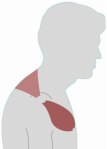 Let’s take a look at a more common problem – a hunched-over position (are you sure you are not hunching over yourself while reading this? :)) The muscles of the chest, upper back and neck have to support the weight of the displaced head (which is heavy) every waking hour. The body segments get pulled out of place and the muscles of the chest get stuck in the contracted position (locked-short), while the muscles of the upper back get constantly pulled on and start acting like straps (locked-long). I got this terminology from Thomas Myers’ book Anatomy Trains.
Let’s take a look at a more common problem – a hunched-over position (are you sure you are not hunching over yourself while reading this? :)) The muscles of the chest, upper back and neck have to support the weight of the displaced head (which is heavy) every waking hour. The body segments get pulled out of place and the muscles of the chest get stuck in the contracted position (locked-short), while the muscles of the upper back get constantly pulled on and start acting like straps (locked-long). I got this terminology from Thomas Myers’ book Anatomy Trains.
So what, you say. Well, both locked-short and locked-long muscles lose their ability to contract properly and become weak, undernourished and eventually painful. You cannot will them to relax, they can only let go to a certain extent, but once you are back to your hunch, they’ll return to their strained place. Trying to stretch a locked-short muscle is like trying to pry open a clenched fist – it won’t give much and then will snap right back into place. Trying to stretch a locked-long muscle is like pulling on a leather belt, how far will that get you? It is already stretched out and you can actually cause more damage by pulling it further.

Locked-short muscle (“tight fist”) is stuck in the contracted position and cannot return to it’s resting muscle length. Because of that it’s contraction range is limited. Locked-long muscle (“leather belt”) is stuck in the stretched out position, becomes weak and is not able to do the full contraction.
What’s the solution then? Contract! Muscles are designed to contract and relax in succession, which increases circulation to the area, brings nourishment and develops muscle tone and strength. So the most effective way of working with the tight muscle is to contract-relax-contract-relax-contract-relax, then stretch (if appropriate). This task is easily accomplished by moving in-out of the pose before holding it.
![]() Take a look at Bhujangasana (Cobra pose). On the inhalation you lift into the pose, contracting your lower back muscles, on the exhalation your return into the starting position to relax your lower back. After doing this contract-relax-contract-relax few times, you can then stay in the pose to strengthen your lower back muscles. After that you can go into the child’s pose to stretch the back. Of course, you have to make sure that you are using your back muscles wisely in cobra, not jamming your lumbar spine and not using your arms. Cobra is one of the most misunderstood yoga postures; it is extremely effective for relieving lower back tension, yet many practitioners give themselves back tension by doing it incorrectly. Very unfortunate. I will explore the cobra pose in detail in my next post.
Take a look at Bhujangasana (Cobra pose). On the inhalation you lift into the pose, contracting your lower back muscles, on the exhalation your return into the starting position to relax your lower back. After doing this contract-relax-contract-relax few times, you can then stay in the pose to strengthen your lower back muscles. After that you can go into the child’s pose to stretch the back. Of course, you have to make sure that you are using your back muscles wisely in cobra, not jamming your lumbar spine and not using your arms. Cobra is one of the most misunderstood yoga postures; it is extremely effective for relieving lower back tension, yet many practitioners give themselves back tension by doing it incorrectly. Very unfortunate. I will explore the cobra pose in detail in my next post.
Back to our topic. Trick question: does this principle of contract-relax-stretch change if the muscle is locked-long as opposed to locked-short? Yes and no. The sequence of events will still be the same: contract-relax-stretch, but for locked-short muscles we’ll place more emphasis on “stretch” at the end to release chronic contraction and encourage them to return to the resting muscle length. For locked-long muscles we’ll place more emphasis on “contract” and probably won’t even do any stretching, because we’d be interested in strengthening the muscle and restoring it’s elasticity.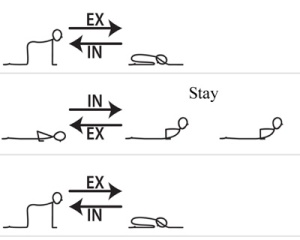
Simple example: This short sequence is useful for the lower back that’s either weak or tight, but the emphasis will be different. If the lower back muscles are weak and overstretched (like they become with the flattened lumbar curve, tailbone tucked), you would need to strengthen them. So you would do this sequence (right): chakravakasana to contract-relax-mildly stretch, cobra up-down-hold to strengthen, chakravakasana to compensate. Main work takes place in cobra.
If the lower back muscles are chronically tight because of the 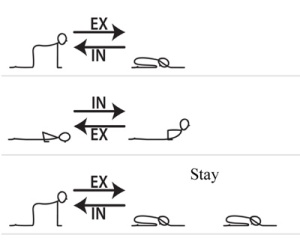 exaggerated lumbar curve, you’d do this sequence: chakravakasana up-down, cobra up-down, chakravakasana up-down, stay in child’s pose. Main work in the child’s pose. Of course, it will take much more work to relieve chronic muscle contraction, but this is a good start.
exaggerated lumbar curve, you’d do this sequence: chakravakasana up-down, cobra up-down, chakravakasana up-down, stay in child’s pose. Main work in the child’s pose. Of course, it will take much more work to relieve chronic muscle contraction, but this is a good start.
By the way, none of that work will have a lasting effect if we continue to engage in the behaviors that got us there on the first place. We have to look carefully at our patterns of movement (or question our students about theirs) to understand what’s causing or contributing to the problem. Then we need to eliminate them or correct them, if eliminating is not possible. My forklift-driving client didn’t have an option to quit his job, but he could try turning to his left as well as to his right while backing up – that kind of thing.
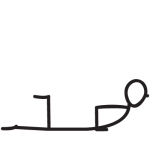 And let me just say – I feel sorry for our poor hamstrings. They get stretched mercilessly in yoga classes, especially if we insist on keeping the legs straight in forward bends. No wonder that one of the most common yoga injuries is literally the “pain in the butt”, or the attachment point of the hamstring tendons to the pelvis. We injure those by pulling on them and then try to remedy it by stretching them again(?!) And then we are surprised that they take forever to heal. So next time one of your students requests hamstring stretches, make sure to include things like this to get the blood flow into the area before you start pulling.
And let me just say – I feel sorry for our poor hamstrings. They get stretched mercilessly in yoga classes, especially if we insist on keeping the legs straight in forward bends. No wonder that one of the most common yoga injuries is literally the “pain in the butt”, or the attachment point of the hamstring tendons to the pelvis. We injure those by pulling on them and then try to remedy it by stretching them again(?!) And then we are surprised that they take forever to heal. So next time one of your students requests hamstring stretches, make sure to include things like this to get the blood flow into the area before you start pulling.
This principle of contract-relax-stretch might seem easy enough in theory, but it can be tricky to implement because we are conditioned to think about stretching. If I asked you to think about yoga poses that would be good for the psoas, what comes to mind first? Lunge? Warrior 1? Dancer? Pigeon? What do they do exactly? Stretch it.
Let me share my own story. Few months ago I’ve developed a pain in my right hip flexor area that felt like it really needed stretching, but if I did stretch it, it felt worse. Hm-mm, I thought, what’s this about? What am I doing differently that’s causing it? Turns out – baby gates! We’ve installed those when my son started to get around and I’ve developed a habit of stepping over them instead of opening and closing. You know, to save time. So I would stand sideways and hike my right leg over it (always the right one) and then pull the left one to follow. Surprise, surprise! My hip flexors on the right side weren’t thrilled. So I eliminated the behavior and set out to resolved the issue it’s created. You would think – if hip flexing had created the problem, then hip extension should resolve it? Nope. 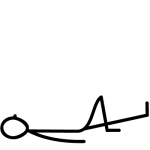 You know what turned out to be the best move for my problem? Not the lunge, not the pigeon, this one! Raising and lowering the leg slightly while keeping the lower back neutral did a fabulous job of contracting the muscles and increasing the blood flow to the area; followed by the supine crescent shape with the leg turned slightly in, to stretch it gently. Works like a charm. Below you can find my full practice with emphasis on psoas/iliacus. Works well for me.
You know what turned out to be the best move for my problem? Not the lunge, not the pigeon, this one! Raising and lowering the leg slightly while keeping the lower back neutral did a fabulous job of contracting the muscles and increasing the blood flow to the area; followed by the supine crescent shape with the leg turned slightly in, to stretch it gently. Works like a charm. Below you can find my full practice with emphasis on psoas/iliacus. Works well for me.
And one last thing. Despite the risk of being ganged up on by restorative yoga teachers, I’ll say this. I do not believe that restorative yoga is effective unless you’ve done some movement first to get your muscles contracting. Or at least, it would take much longer for your body to release without it. Just my two cents.
So let’s review. When working with a tight muscle (any muscle), first analyze the behavior that’s causing it and change it. Then address the issue by contracting the muscle first, then relax, then stretch (if appropriate). So stretching is literally ‘the last thing you want to do’.

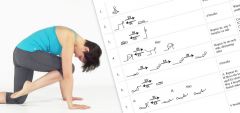

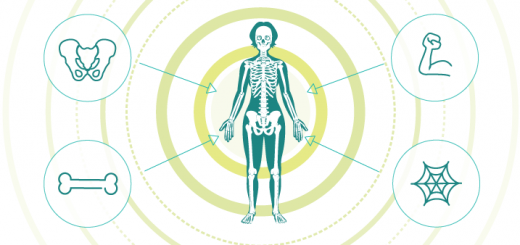
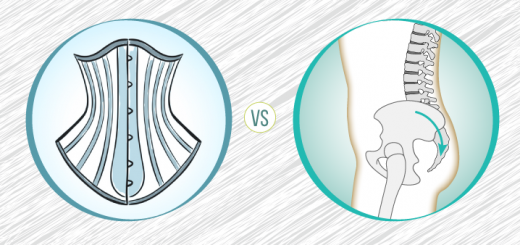
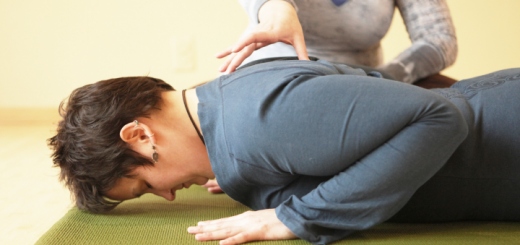















Great blog. Easy to digest, hitting the nail (or psoas) right on the head!
Abi x
Thanks Abi!
Love your comment about movement before a Restorative Yoga practice; I always thought it would be more effective but the resistance from students was palatable! Thank you, also, for the ‘stretching’ clarification.
Thanks Leslie!
I agree with what he says, just add how important a teacher see inthe students know which muscles contracted or somatic to make precise movements to help move properly. Yoga teachers we must know physiology and bio mechanics of the muscles.
Thank you for your comment, Victor! I agree – yoga teachers need to have a solid knowledge of what’s happening in the body.
Wonderful article Olga, thank you so much!! I will be sharing this with others 🙂 And….I didn’t realize you were the one behind sequence wiz – brilliant! As Mirka would say, “Well done, Yogi, well done!”
Hi Justine! Yep, Sequence Wiz is my baby, I hope folks will find it useful! Thanks for reminding me of Mirka’s words – it made me smile!
I am having difficulty with upper back/shoulder pain on the left which seems involve the supraspinatus, levator scapulae, subscapularis and the rhomboids. I even notice pain at my deltoid insertion. I get temporary relief from an acupressure point on my arm, icing and a capsacin linament, but nothing seems to be curing it. I have been stretching my neck turning my head right and tilting it down with pressure from my right hand on the left side of my head, but it makes no difference. Can you help me? What are some contraction/relax exercises I can do?
Hi (I am sorry, I don’t know your name)!
Sorry about your troubles. It is really hard to diagnose what’s going on with your upper back from this short description. Few suggestions:
1. Stop stretching the the left side of the neck, it doesn’t seem helpful.
2. Try this short sequence, doing it slowly, in connection with your breath and notice if either one of those movements seem helpful: http://www.sequencewiz.com/Content/Neck-Practice-on-a-chair.aspx
3. You can check out this DVD, it addresses the neck/upper back tension specifically in a smart way: http://www.amazon.com/Viniyoga-Therapy-Upper-Shoulders-Kraftsow/dp/B000U0FZ0K/ref=sr_1_1?ie=UTF8&qid=1374118487&sr=8-1&keywords=yoga+therapy+for+the+neck
4. Where do you live? I might be able to recommend a good yoga therapist for you locally.
Keep me posted!
Great article!!!
Thank you! Glad you found it useful.
Olga!
You’re so right about leg raises being good for certain hip flexor “crankiness”. They have saved me. Thanks for the info.
Thanks Emily! Welcome back home!
Hi Olga, great job creating Sequence Wiz and writing these thoughtful and good articles. Keep it up. I hope to meet you again at some future AVI workshops.
All the best for your family and for your Yoga transmission.
Thanks, Gaby! I, too, hope to run into you at a future AVI gathering! I am itching to attend one of them, but don’t feel confident leaving my 2 year old yet.
[…] it is the last thing you would want to do! As we’ve already covered in an earlier blog post [A smart way to relieve muscle tension], trying to stretch a locked-short muscle is like trying to pry open a clenched fist – it won’t […]
Great Job Olga !! Also many people also go for massage therapy to reduce muscle tension.
Thanks Daniel! Massage certainly helps! I find it works best when it’s a combination of things that you can do on your own (like movement) and things that someone can do for you (like massage).
[…] it is the last thing you would want to do! As we’ve already covered in an earlier blog post [A smart way to relieve muscle tension], trying to stretch a locked-short muscle is like trying to pry open a clenched fist – it won’t […]
Hi Olga :),
I LOVE your blog!! So much information and so beautifully made!! 😀
One question from reading this post (I’m not a Yoga instructor, I’m a newly certified Pilates instructor)-
you wrote- “… followed by the supine crescent shape with the leg turned slightly in”. How does this look like? 🙂 Can you add a drawing?
Thanks a lot!!
Hi Katia, thank you for your comment! That crescent shape move is one of my favorites. You can see it in this practice (#8) http://sequencewiz.org/2014/02/15/short-yoga-sequence-hip-flexors/ It’s a bit hard to draw, but there is a short description there. Hope this helps!
I just adore you and your blog!! Thank you!!!
Just a quick question, where can I read more about this theory that stretching is the last thing we need to do, and first we need to contract-relax the muscles….
Many thanks!!!!
Thank you Sheli! This knowledge about the contract-stretch relationship comes from understanding the physiology of muscular function; you can find it in any anatomy/physiology book. I wrote a little bit more about it here: http://sequencewiz.org/2014/10/29/stretching-overrated-muscle-tension-muscle-soreness/ You might also find this podcast interesting: http://www.liberatedbody.com/jules-mitchell-lbp-009/ – Jules Mitchell had done extensive research on the science of stretching and arrived at the same conclusions. I hope this helps!
what is a good exercise for a chronically contracted QL muscle?
Hi Sally! Check out this yoga practice specifically designed to loosen up tight QL muscles: http://sequencewiz.org/2014/05/23/pelvis-leveling-yoga-practice/ You can try dansing salsa, too! 🙂 http://sequencewiz.org/2014/05/21/dance-way-hip-pain-ql-tension/
Having trouble with pain in hip and mid butt. When I walk, which I do each day, when heel hits pavement, I feel pain. This is a sharp pain.
At night when sleeping, it becomes a dull ache.
Thoughts?
4 months ago I suffered a spiral fracture of my left humerus. After the cast was removed I realized the bicep muscle was “locked” resulting in restricted ability to move my arm. I have not found a remedy for this. Can you help?
My mid back (think bra strap location) is “locked up” and the muscles are very tight according to a chiropractor. I have sudden sharp pain when rolling forward. Would the contraction method help release those muscles and restore proper range of motion for me? Which specific methods would be best?
Very Helpful.
What a great article, and blog! Thank you! Feels like a nice “gift” to the community, when so many sites want you to buy something to gain anything useful. I’m trying to self-diagnose some hip flexer (I think) and glut pain, so I’m going to keep reading! Dara
Hello I only have pain when sitting in my butt…any recommended stretch?
Hi Olga. Can you suggest a contract release for the calf muscle area.
I don’t understand why each morning I get up and have horrific spasms at different places each morning. At times it might be on the left side of buttocks, next day right side and then another day in left hip joint and down back of both legs. Few times, and oh my gosh I thought I’d die, but at the same time. Both left and right sides. I’ve been to dr, I have lost about 17 pounds since it has gotten warmer outside, I only weighed 123 to start with. I wasn’t trying. 52 yrs old, work in shipping dept. Always lifting tugging pulling boxes . Come home and I would work in my flower garden. Digging holes mulching etc. I lost a lot of fluids by sweating and not realizing I had dehydrated myself and made muscles weak etc. I have had sciatic pain for a yr now prior to this and Dr gave steroid shots for it. I think I have had 3 or 4 shots total. I am beyond anything at this point. I can’t do stretches b/c I guess most muscles are highly inflamed. I do ice packs and soak with Epsom salt, drinking water,body armor, boost to replace what I have lost. Drinking pickle juice as well and walk quite a bit. Afraid to be still b/c I’m a fair I will start hurting again. Worst time is of a morning and evening time. Do u have any suggestions or thoughts on this? Thank you
my middle back freezes up after i sleep. so getting up in the morning is quite difficult. once im up and have been upright for about 15 minutes it begins to release and relax. i can then start doing some of the cobra and childs pose. But, Im not sure what I’m doing during the day to cause this, or perhaps what Im not doing. Any suggestions?
Sorry to hear that Amy! Have you tried doing some simple movement in the evening? Even something simple like this chair yoga practice for upper back can make a difference. What position do you sleep in?
I have mechanical and residual pain due to multiple myeloma fracturing 9 vertebrae the spine is completely healed but the muscles at the side of my spine are tight and sore I do Pilates he is fully qualified and understands my condition any tips
Previous gymnastics/cheer coach/director-years ago. The pictures you create are awesome. I can’t draw, so to teach back handsprings, for instance, the poor athletes would have to deal with my crude stick figures. But today I’m here to see if I can loosen up a butt muscle before I lose my mind and I realize these are absolutely the best pics to explain. I’m testing out the techniques you’ve shared AND heading to a doctor. I noticed stretching was definitely not helping but had no idea why until tonight. Thank you so much, ~Teraisa
Thank you Teraisa, it’s wonderful to hear that it was useful for you! I hope gentle contraction will help your tight muscles. P.S. I am a big fan of stick figures myself 🙂 I love how quickly they can communicate the movement and how customizable they are. We have the whole stick-figure yoga sequence builder on this site. But, of course, stick figures cannot show muscles, bones, etc, so other images can work better. Best of luck on your journey!